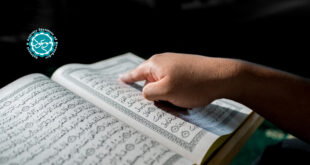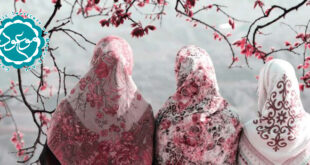A Strange View
A concocted view has been inculcated into Ahl al-Sunnah that weeping causes the departed soul to receive divine punishment. That is why Abdullah Ibn Umar has quoted a tradition:
“The weeping of the living for the dead causes the dead one to be punished.” First of all it is against divine justice that if the living weep the dead should be punished. And it is clearly against the Qur’anic verse:
…and no bearer of burden shall bear the burden of another…27
Secondly, Ayesha has clearly refuted this tradition of Ibn Umar and she says that the Messenger of Allah (s.a.w) has definitely not said thus.28
(Sunni Tradition): The grand daughter of Abu Bakr, Umrah says that she heard her paternal aunt, Ayesha say, when she was told that Abdullah Ibn Umar says that the weeping of the living on the dead causes punishment to the dead. Ayesha said, “May Allah forgive (Ibn Umar) as he has not lied intentionally. He has forgotten or he has misunderstood. The fact is that the Messenger of Allah (s.a.w) passed by from a place where some Jews were weeping for a dead Jewess. So he said that these people are weeping for her although she is being punished in her grave (it means that weeping on a dead infidel does not decrease his or her punishment). This narration is accepted by all.
A similar type of tradition is mentioned in this chapter from Abdullah bin Abi Malika at the end of which it is stated that Umar had also mentioned this report about the punishment. When Abdullah Ibn Abbas told Ayesha about it she said:
(Sunni Tradition): May Allah have mercy on Umar. By Allah! The Messenger of Allah (s.a.w) never said that due to the weeping of the living ones, the dead are punished. Rather he said that Almighty Allah increases the punishment of the disbelievers when the survivors weep upon them.29 Then Ayesha said: The Qur’an is sufficient for you. Remember this verse:
…and no bearer of burden shall bear the burden of another…30
Now after the unveiling of truth even if we don’t discuss the authenticity of the reports of Umar and Abdullah Ibn Umar we would have to agree that all this is nothing but a case of misunderstanding.
Although the Holy Prophet (s.a.w) had scolded Umar many times when he restrained people from weeping. But to be true to his nature he did not give up this habit. Mishkat has many traditions on this subject. But we shall mention only a brief report here:
(Sunni Tradition): Someone died from the family of the Messenger of Allah (s.a.w). So women gathered and began to weep on the death. Umar stood up and restrained them and began to chase them away. The Messenger of Allah (s.a.w) said, “Umar, leave them alone! Because the eye weeps and the heart is sorrowful and the covenant is near.”31
This report has been quoted by Ahmad bin Hanbal and Nasai.
These traditions show that weeping is from the practice of the Prophet and to restrain people from weeping is from the practice of Umar. Now it is upto you to leave the practices of the Prophet and follow the practice of Umar.
Ta’ziyah, Zuljana and Replicas (Mock-ups)
A. How to Detect Polytheism?
Before I present traditions about Ta’ziyah and other representations I feel it is necessary for me to clarify a misunderstanding of Ahl al-Sunnah. These people often say that Ta’ziyah is polytheism and idol-worship and one who respects a Ta’ziyah is a polytheist and idol-worshipper. Therefore here we must understand what polytheism denotes.
Most of the people have misunderstood the definition of idol and think that it is replica of a living thing. Let us examine this view.
Are replicas of only living things idols? Definitely not. Otherwise those Lings32 etc. that are kept in Hindu temples would not have been called idols.
Is idol only a replica? Definitely not! If it had been so, those rounded natural stones that they place in temples would not qualify.
Is idol among the things constructed by man? Definitely not! If it had been so, the cow that is worshipped, that Peepal and Banyan tree that is revered, and the river and the mountain that are considered deities would not have been considered idols.
Then what, after all, is an idol? Is every replica made by human hands, every river and mountain is an idol? When any limitation is not possible in this way how can we define what an idol is? For this it is necessary to find out what is the common point in them. You shall know the reason why all the above things are called idols. You shall realize that all the above things are referred to as idols because they are worshipped either as equals to God or as media for reaching God. Thus this deification is the only thing that makes the revered object an idol. That is why until the round stone is kept as paperweight on my table it is not an idol and from the day this stone begins to be worshipped, this same harmless stone would become an idol.
Now let us examine the Ta’ziyah on this criterion. It is obvious that we neither worship the Ta’ziyah nor any thought of deifying it has ever entered the mind of any Shia person so far, because our monotheism is firm and strong. That upto there even the doubt of those who consider you neo-Muslims as leaders cannot reach because your leaders have even legalized worship of their footwear as Abu Hanifah has said:
“If a person worships these slippers with the intention of gaining proximity to God, there is no harm in it according to me.”33
While our Imams, leave alone dirty objects like slippers, they have prohibited us to even consider a great personality like the Holy Prophet (s.a.w) to be having divinity and they emphasized upon believing him to be a servant of Allah. Anyway we thus come to know that Ta’ziyah is not an idol.
Another objection that is leveled is that it is a replica and making a replica is unlawful. Although, those who make such objections are not familiar with Islam, neither are they aware of their own school of thought. No sect of Islam has made it absolutely unlawful to make a replica or a picture. Only making a replica of a living thing is made unlawful. Now who would tell us what living thing a Ta’ziyah represents? It is only a replica of a structure and making a replica of a structure or building is not unlawful in any Shariat.
And if God forbid, even if it had been a replica of a living thing, only we Shias would have been qualified to make it unlawful. Such prohibitions from your side seem funny when your own school of thought has made lawful making pictures and idols of living things. You people report that such things existed even at the home of the Messenger of Allah (s.a.w). See the following narrational report in Mishkatul Masabih, Baab Ashratun Nisa:
(Sunni Tradition): Ayesha is reported to have said that she continued to play with dolls even after entering the house of Allah’s Messenger (after marriage). She says, “I had some friends who used to play with me. When the Messenger of Allah (s.a.w) arrived my friends hid themselves. So the Messenger of Allah (s.a.w) used to send them back to me and they used to continue playing with me.” (A well-known tradition)
This report is also present in Jame Bain as-Sahihain and Jameul Usool. Muhaddith Dehlavi, explaining this report says, “It is allowed to make dolls.”
How funny it is that those who allow worship of sandals and consider making dolls lawful, they should be so much against making harmless replicas of buildings, that Taziyahs are.
We have also proved that it is lawful to make Taziyahs and other replicas. Let us now move a step forward and see how it could be a recommended and meritorious deed.
(B) The Prophet’s Sunnah is Practical
The narrational report of Musnad Ahmad Hanbal that we quoted in the beginning has proved that the Holy Prophet (s.a.w) placed the soil of Karbala’ before himself and wept. This action of his justifies all symbols associated with Azadari.
(Sunni Tradition): After the mention about the arrival of the soil of Karbala’, Umme Salma says: Then the Messenger of Allah (s.a.w) smelled the soil and said that it smelt of pain and calamities. Then he told Umme Salma that when that soil turned into blood she must know that his son has been martyred. So Umme Salma placed it in a bottle and observed it everyday and said: The day you become blood shall be a day of great tragedy. And it is reported that when Husayn was martyred, for seven days the sky remained as if it were a mass of blood.34
Before the martyrdom, only the soil of Karbala’ could be obtained for Azadari and it was stored safely in the Prophet’s house. Therefore, today when we are fully informed about the details of the actual event we establish separate memory for each incident. Is it not a perfect example for following the Prophet’s Sunnah?
(C) The Prophet’s Practice is Verbal
However, if you are still doubtful whether it justifies the making of replica of a grave, and think that making it is unlawful, please read on the following traditional report for further reassurance:
A companion told the Messenger of Allah (s.a.w) that he has vowed to kiss the threshold of Paradise and the Hurul Ein. The Holy Prophet (s.a.w) told him: Go and kiss the feet of your mother and the forehead of your father. He asked what he should do if his parents were not alive anymore? He was told to kiss their grave. Again he asked what he should do if he didn’t know where their grave was? The Messenger of Allah (s.a.w) told him to, “Draw two lines and consider one as the grave of the mother and the other as the grave of the father and kiss them, and do not break your vow.”
Check Also
15 European Countries With Most Muslims
According to Mouood, quoting by World Atlas: 15 European Countries With Most Muslims By 2050, Muslims …
 Mouood Mouood English Edition
Mouood Mouood English Edition



